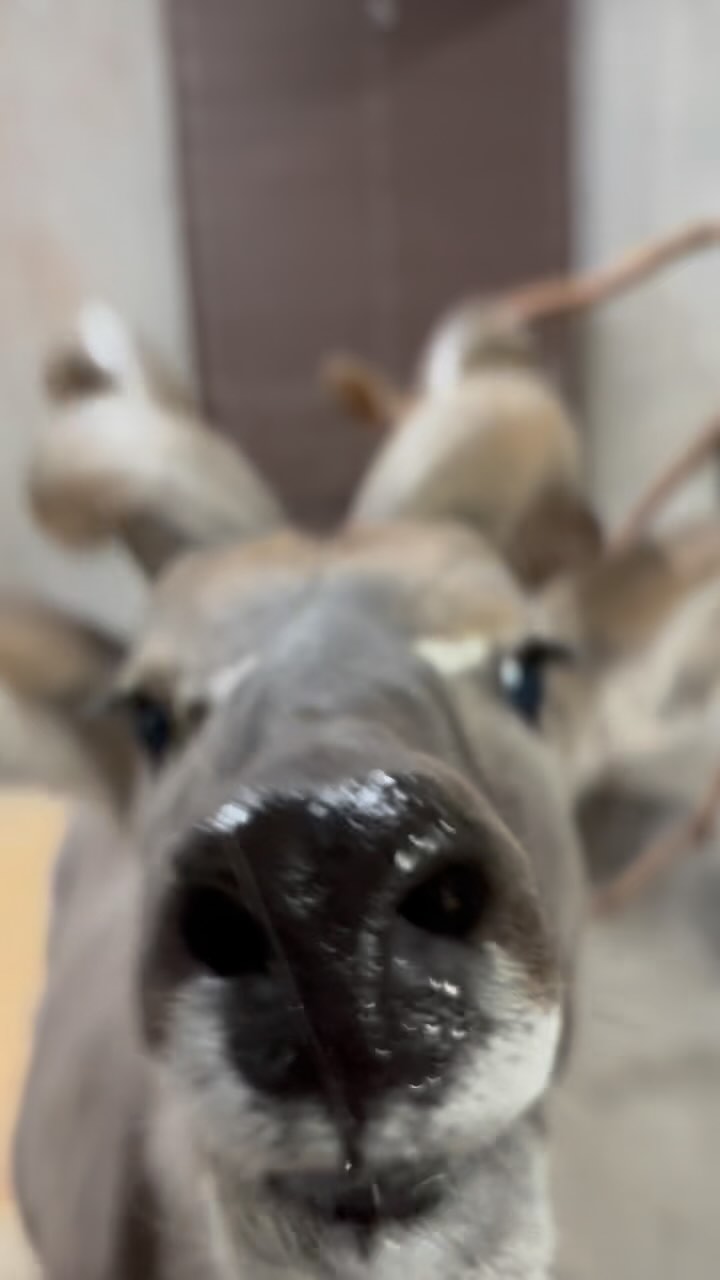- The dietary habits of the lesser kudu and their significance in their environment.
- The behavior and interaction of lesser kudus within a social structure.
- The role of predators in shaping lesser kudu behavior and adaptations.
- Conservation efforts focused on lesser kudus and their habitats.
- The importance of educational outreach in wildlife conservation.
Lesser kudus are medium-sized antelopes found mostly in eastern and southern Africa. Characterized by their long, slender bodies and striking spiral horns, these animals have distinctive stripes that help with camouflage. They require a diet rich in foliage, fruits, and grasses. Lesser kudus are browsers by nature, which means they primarily feed on shrubs and trees. The nutrients derived from their diet bolster their health and help them adapt to varying environmental conditions.
Before heading outside, the lesser kudu, specifically Hobbs, takes some snacks in the barn. These snacks might include specially formulated pellets that zoo staff provide, designed to meet the nutritional needs of the species. The nutrient profile in these pellets often mimics what they might consume in their natural habitat, ensuring Hobbs receives a balanced diet. This thoughtful preparation helps maintain their health and vigor, especially when surrounded by human-made structures.
Their natural behaviors, such as feeding and foraging, are critical for their survival in the wild. By managing an environment that encourages these activities, zookeepers can observe the lesser kudus’ preferences and dietary needs closely. Such insights can enhance animal welfare while providing educational opportunities for visitors.
Social interaction among lesser kudus is also noteworthy. These animals are typically solitary but can be seen in small groups consisting of females and their offspring. Males are usually more solitary, especially during mating season. Hobbs, being one of the lesser kudus in the barn, is often seen interacting with his companion, female Fjorda. Waiting her turn to venture outside, Fjorda adds a layer of social dynamics to the barn setting. This social structure is essential for their emotional well-being and fosters natural behaviors that are vital for psychological health.
The presence of predators like lions and painted dogs significantly influences the behaviors and lifestyles of lesser kudus. In the wild, these antelopes have adapted to be vigilant, using their keen eyesight and acute sense of hearing to detect threats. Their striped coat provides effective camouflage among the dense vegetation, allowing them to blend into their surroundings. This adaptation is a crucial survival mechanism, as it helps them evade predators.
Hobbs, like all lesser kudus, remains ever-watchful, usually standing still to avoid detection when danger approaches. This heightened awareness is part of their instinctual behavior shaped by evolutionary pressures. Observers can distinguish a relaxed kudu from one that is alert. A relaxed animal typically grazes or interacts with its peers, while an alert kudu holds a stiff posture and scans its surroundings.
Conservation efforts aimed at lesser kudus focus on habitat protection and anti-poaching initiatives. Various organizations work to maintain the integrity of ecosystems where these animals thrive. Encroachment from agriculture and urban development poses significant threats, leading to habitat loss and fragmentation. In response, conservation measures include habitat restoration and creating wildlife corridors to facilitate safe movement between areas.
Education plays a vital role in these conservation efforts. By raising awareness about the importance of lesser kudus and their ecosystems, outreach programs can inspire individuals to participate in conservation activities. Zoos and wildlife parks often serve as educational platforms, offering insight into lesser kudus’ lives and their role within biodiversity. Engaging the public through guided tours, informative displays, and interactive experiences can foster a deeper understanding of wildlife conservation.
For instance, when visitors observe Hobbs snacking on pellets, they gain a tangible connection to the animal’s dietary needs and behavioral habits. Introductions to feeding routines allow adults and children alike to appreciate the complexity of animal care. Furthermore, sharing knowledge about the vulnerabilities of lesser kudus can galvanize support for broader conservation efforts.
In captivity, lesser kudus are typically kept in enclosures that reflect their natural habitats, including plants, trees, and shrubs. These environments allow animals to exhibit natural behaviors such as browsing and hiding. Additionally, the architectural design of enclosures is crucial for their safety and comfort. Good zoos prioritize animal welfare by replicating natural conditions as much as possible, maintaining clean, enriching environments.
Zookeepers carefully monitor dietary intake and health indicators, adjusting snacks as necessary. The variation in Hobbs’ diet, especially when combined with fresh produce and foraged items, offers essential vitamins and minerals. Engagement with these animals through feeding also helps deepen bonds between the animal and the keeper, which can lead to more accurate assessments of the animal’s well-being.
Research into the lesser kudu is vital for improving care standards in zoos, as well as informing conservation strategies in their native habitats. Studying their behavior, genetic diversity, and ecological roles can help shed light on the broader trends affecting all antelope species. Collaboration with conservation biologists and field researchers allows zoos to participate in scientific inquiries that may benefit species survival in the wild.
As lesser kudus navigate the challenges of their environments, their adaptability plays an essential role in their success as a species. Researchers investigate various adaptations, such as changes in social structure or dietary preferences in response to altered habitats. Such insights can inform management strategies aimed at bolstering lesser kudu populations in the wild.
Fjorda’s patience while waiting her turn to get outside mirrors the importance of selecting the right timing for releasing animals from their enclosures. The time of day, as well as weather conditions, can significantly influence animal behavior. Understanding these factors is crucial for maximizing outdoor activity and enrichment opportunities.
Interactions with other species can also provide essential stimulation. Lesser kudus are often placed in mixed-species exhibits with compatible animals. Such settings enable them to engage in natural behaviors while allowing for monitoring of social dynamics. Zookeepers can observe how these interactions affect feeding patterns, locomotion, and overall animal welfare.
The success of conservation efforts surrounding lesser kudus requires long-term commitments from individuals and organizations alike. Initiatives that foster habitat preservation, public education, and research will lay the groundwork for a sustainable future for this remarkable antelope. Raising awareness of issues impacting lesser kudu populations—such as poaching and habitat destruction—will cultivate a sense of responsibility and stewardship in communities.
Protecting the lesser kudu is not just about saving a single species; it encompasses preserving the complex ecosystems they inhabit. Biodiversity loss affects numerous species, including plants and animals that share these environments. As lesser kudus play a role in their food web, their conservation reflects a larger, interconnected effort to promote ecological health.
Educational programs, whether through organized school trips or community workshops, extend the reach of conservation messages. When people experience animals like Hobbs and Fjorda firsthand, they develop a personal stake in their preservation. Empathy and understanding can encourage advocacy, whether through local conservation projects or larger-scale initiatives.
The combined impact of awareness, education, and active participation can amplify the message of conservation. Lessening human impacts on wildlife requires comprehensive strategies that include sustainable development approaches and community engagement. By integrating knowledge of social structures, dietary needs, predator interactions, and habitat requirements, we can better facilitate the ongoing survival of lesser kudus in the wild.
With the unique gifts offered by animals like Hobbs and Fjorda, it becomes increasingly clear that preserving wildlife is vital not just for individual species, but for the health of our planet as a whole. The commitment to safeguarding lesser kudus and their habitats will resonate well beyond the confines of a barn or zoo, contributing to a brighter ecological future for generations to come.
*****
Source Description
Hobbs the lesser kudu snacks in the barn before heading outside while female Fjorda waits her turn! 😻 A large, striped antelope, the lesser kudu is always on the lookout for predators like lions and painted dogs.

